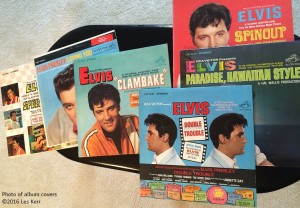
From my collection of Elvis movie soundtrack albums. These contain bonus songs.
There were certainly plenty of gold records and chart-toppers, but there could have been more. Many other songs Elvis Presley recorded had hit potential had they not been relegated as bonus material on his movie soundtrack albums. When the films Loving You, Spinout, Clambake, Speedway and others came up short of material to fill a twelve-inch 33 & 1/3 RPM vinyl record, some gems were tucked away behind the songs actually used in the movies so the record company could distribute another 12-song Elvis album to his loyal fans. Had these songs been whole-heartedly promoted as singles (a few were released on 45 RPM), Elvis’ mid-sixties chart hits would have been more numerous and substantive than some of the records RCA Victor released by the singer between Return to Sender (1962) and If I Can Dream (1968).
As a lifelong Presley fan, I have fond memories of watching his movies and being thoroughly entertained. My favorite is King Creole, set and filmed on location in New Orleans with a dynamite cast that included Walter Matthau, Carolyn Jones, Dean Jagger and Vic Morrow. The music was up to par with Elvis’ abilities and there was plenty of it, no need for filler on that soundtrack disc. Other early films that brought out Presley’s acting and singing talent were Jailhouse Rock, Loving You and Wild in the Country.
Unfortunately, in many subsequent movies, Elvis’ acting and singing were under-utilized. Forgettable story lines and songs written to match them or inserted because they had already been recorded helped categorize the “Elvis Movie.” Travelogues with bikini-clad babes in colorful settings featuring Elvis, rockin’, rollin’ and romancin’ his way through them.
Clambake(d)

Bonus songs on the Clambake soundtrack included Guitar Man and Big Boss Man
As a student at the University of Mississippi in the 1970s, I wrote a term paper on Elvis movies. I found a review of Clambake, a film set in Florida starring Elvis as a singin’, swingin’ water ski instructor who also drove speedboats. The reviewer noted that at the end of the film, Elvis drove off with Shelly Fabares in a convertible with the mountains in the background. The beautiful, famous Florida Mountains. That scene was obviously filmed in California. Having viewed Clambake recently, it appears to me that all scenes in which Elvis actually appeared could have been shot on the West Coast.
Included on the Clambake soundtrack album, however, are two of my favorite Elvis performances labeled “bonus songs.” He covered country guitar great Jerry Reed’s Guitar Man for the first time (it was later a cornerstone in what became his 1968 Comeback TV special) and the blues classic Big Boss Man, composed by Luther Dixon and Al Smith and popularized by Jimmy Reed. Big Boss Man was also adapted for the TV special. Unlike the movie songs, these bring Elvis back to his country, rock and blues roots. They were delivered so naturally and sounded, well, like Elvis.
Elvis sang Dylan in the sixties (and nobody was notified)

Elvis sang Bob Dylan’s Tomorrow is a Long Time, added as filler on the Spinout album
Similarly, the Spinout album, from a 1966 movie where Elvis played (you guessed it) a singing race car driver, produced Presley’s outstanding rendition of Bob Dylan’s Tomorrow is a Long Time. If RCA had left the soundtrack on the shelf and promoted that song with the angle, “Elvis Sings Dylan,” I believe it could have propelled the star’s comeback two years before the 1968 TV show.
In the following decade, RCA released an edited version of Elvis singing Dylan’s Don’t Think Twice, It’s Alright as an album track on a project simply titled, Elvis. The version sounds like Presley was jamming with his band in the studio and happened upon a song he liked. The released version is only about two minutes long while the complete track lasts much longer. As with the release of the Spinout album containing Tomorrow is a Long Time, the album came at a time between hits. This time, after Suspicious Minds and Burning Love and a few years before Moody Blue and his posthumous single, a live cover of Frank Sinatra’s My Way. Again, an “Elvis Sings Dylan” promotional effort might have resulted in a high charting single.
Aside from my opinion that the bonus songs would have been hits, they would have also shown the world where Elvis really was, musically, beyond the soundtracks and non-movie singles. He released some great songs as singles in the mid-sixties, no doubt. Among them are Crying in the Chapel and Devil in Disguise. The bonus songs, however, as well-promoted singles, would have really enhanced Elvis Presley’s better-known body of work.
Text and photos of album covers from Les Kerr’s collection copyright 2016/2022.
 Click here for Contributor and other Les Kerr CDs, Tour Dates, Videos and more!
Click here for Contributor and other Les Kerr CDs, Tour Dates, Videos and more!


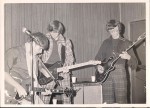
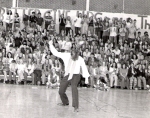


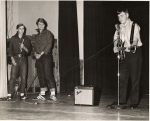

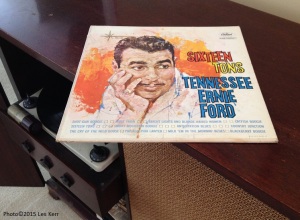
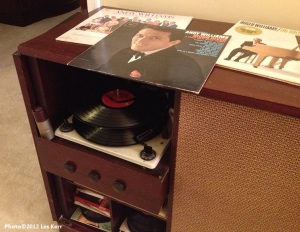
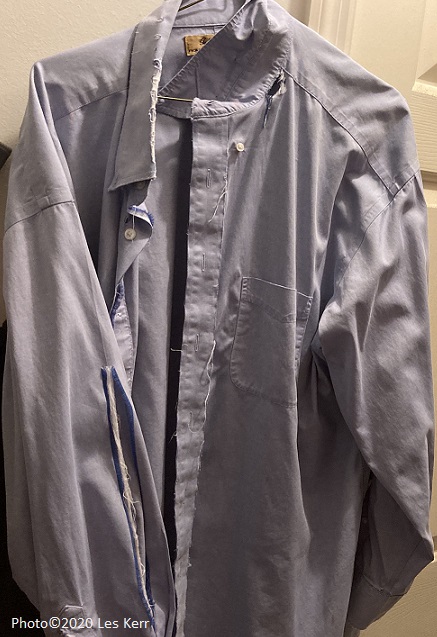

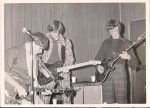




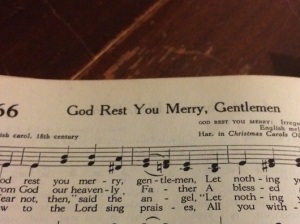 The Christmas story is beautiful, meaningful, sacred and true. It tells how Jesus came into this earth, becoming God and man at once. Luke told us how it happened and what was to become of the Christ child.
The Christmas story is beautiful, meaningful, sacred and true. It tells how Jesus came into this earth, becoming God and man at once. Luke told us how it happened and what was to become of the Christ child.
 my story of learning about him via “The Pilgrim.” He has probably heard the same story from others many times but he politely listened. Then I asked him to play the song. Chris declined, saying that he would be uncomfortable playing a song written about him. When I told him I learned it in 1971 and still played it, he handed me his guitar and said, “Go ahead.” There I was in a situation that I could only have dreamed of years before. Playing Chris Gantry’s guitar, singing a song written about him, and having him join in on the chorus, which he did. What a moment. Then, he asked me to play one of my own songs. Up until then, I had been joyfully excited. Now, I was nervous. When I finished, I handed his guitar back to him and he told me he enjoyed my song. To call that a personal highlight would be an understatement.
my story of learning about him via “The Pilgrim.” He has probably heard the same story from others many times but he politely listened. Then I asked him to play the song. Chris declined, saying that he would be uncomfortable playing a song written about him. When I told him I learned it in 1971 and still played it, he handed me his guitar and said, “Go ahead.” There I was in a situation that I could only have dreamed of years before. Playing Chris Gantry’s guitar, singing a song written about him, and having him join in on the chorus, which he did. What a moment. Then, he asked me to play one of my own songs. Up until then, I had been joyfully excited. Now, I was nervous. When I finished, I handed his guitar back to him and he told me he enjoyed my song. To call that a personal highlight would be an understatement.

